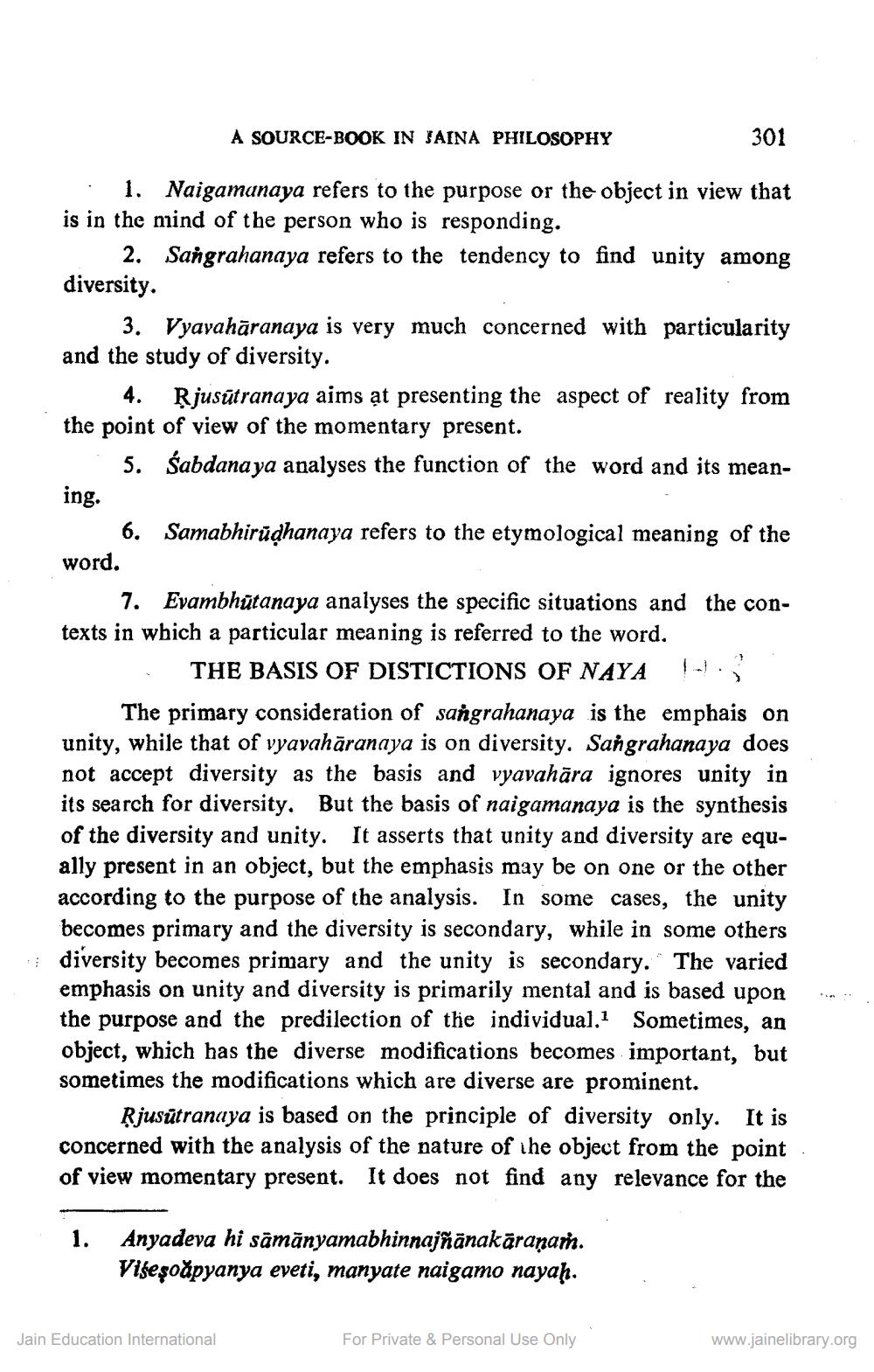________________
A SOURCE-BOOK IN JAINA PHILOSOPHY
301
1. Naigamunaya refers to the purpose or the object in view that is in the mind of the person who is responding.
2. Sangrahanaya refers to the tendency to find unity among diversity.
3. Vyavahāranaya is very much concerned with particularity and the study of diversity.
4. Rjusūtranaya aims at presenting the aspect of reality from the point of view of the momentary present.
5. Śabdanaya analyses the function of the word and its meaning.
6. Samabhirüờhanaya refers to the etymological meaning of the word.
7. Evambhūtanaya analyses the specific situations and the contexts in which a particular meaning is referred to the word.
THE BASIS OF DISTICTIONS OF NAYA ... The primary consideration of sangrahanaya is the emphais on unity, while that of vyavahāranaya is on diversity. Sangrahanaya does not accept diversity as the basis and vyavahāra ignores unity in its search for diversity. But the basis of naigamanaya is the synthesis of the diversity and unity. It asserts that unity and diversity are equally present in an object, but the emphasis may be on one or the other according to the purpose of the analysis. In some cases, the unity becomes primary and the diversity is secondary, while in some others diversity becomes primary and the unity is secondary. The varied emphasis on unity and diversity is primarily mental and is based upon the purpose and the predilection of the individual. Sometimes, an object, which has the diverse modifications becomes important, but sometimes the modifications which are diverse are prominent.
Rjusūtranaya is based on the principle of diversity only. It is concerned with the analysis of the nature of the object from the point of view momentary present. It does not find any relevance for the
.
1.
Anyadeva hi sāmānyamabhinnajñānakāranaṁ. Višeşoăpyanya eveti, manyate naigamo nayah.
Jain Education International
For Private & Personal Use Only
www.jainelibrary.org




